Where can you hide a dead body?
…On Google’s second-page search results. Hardly anyone will look there.
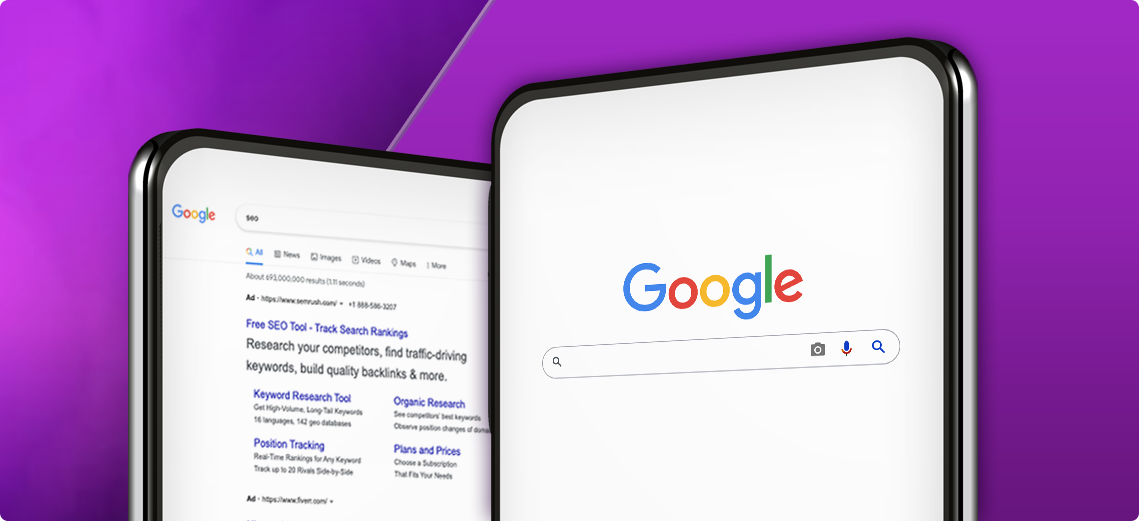
Statistically, only 0.78% of users ever check the second-page results. If your website doesn’t appear on the first page when someone searches for your services or products, it’s invisible, like having a store at the back of the mall. No one is aware you are there.
Search ranking in Google is critical for traffic and the life of your website. There are two ways to achieve a life-giving first-page ranking, SEO (Search Engine Optimization) and SEM (Search Engine Marketing). This article focuses on the critical elements to include when building a website or sales page.
Although this article won’t cover all the details and analytics involved with running SEO or SEM campaigns, you will gain the best tips and insights from years of creating websites that rank.
So, let’s get started.

What is Search Marketing
Search marketing is a strategy used to attract and pull in online traffic to a website. It relies on search engines like Google, Yahoo, and Bing. The purpose of search marketing is to:
- – Boost your website’s visibility when people search for your product or service.
- – Improve your website’s search rankings and…
- – Drive more website traffic via search
The objective is to have your business appear in the search results for people looking for a solution that you provide. To all companies who want to grow, search marketing is a critical tactic.
SEO VS SEM
Whenever you do a Google search, you see a search page. It’s called a Search Engine Results Page or SERP.
The top and bottom sections of the SERP contain paid ads. You’ll see the word “AD” next to the title, and marketers buy these ads. Below the SEM results are the organic or SEO results.
The main difference between them is SEM gets visibility and traffic from paid (pay per click or PPC) sources. SEO focuses 100% on ranking on the first SERP to generate traffic from organic search results.
So, SEO is free, but you pay for each click or impression with SEM.

What is SEO?
The process of optimizing online content is search engine optimization or SEO. The goal is to have search engines show your page as a top result when someone searches using relevant keywords.
SEO uses ORGANIC strategies to appear in search. Now, when I say organic, I don’t mean no pesticides, locally grown, or organic, like non-GMO. I’m saying that the results are organic because you do not pay each time someone clicks on your link.
Once you rank higher and people start clicking, organic is an inexpensive way of getting more traffic.
Ranking and search rely on search engines. Here are the top 10 search engines along with their world market share:
Once you rank higher and people start clicking, organic is an inexpensive way of getting more traffic.
Ranking and search rely on search engines. Here are the top 10 search engines along with their world market share:
The Top 10 Search Engines
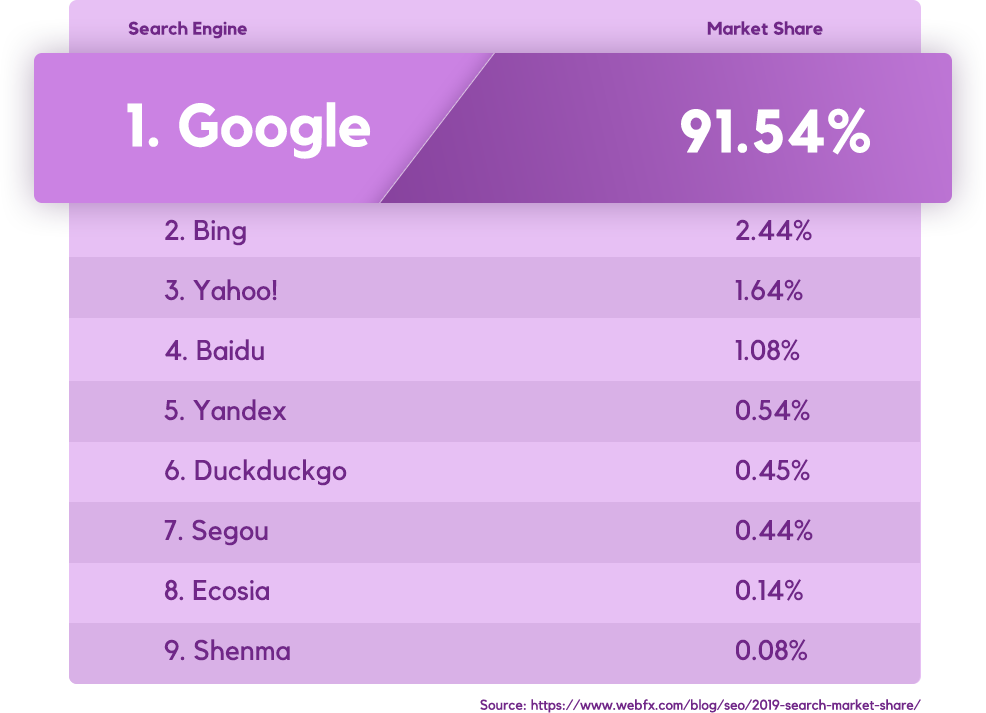
Of course, Google is the world’s number one search engine. They use the best practices, and if you can rank highly with them, you’ll rank high in all the others. Many of our clients prefer to rank on Bing, but Google is the Beastmaster in search marketing.
Why Should You Invest Time & Money in SEO?
There are three excellent reasons that SEO is worth the investment of time and money.

1. Sustained Value
If you start ranking high for specific keywords, such as your company’s name or exact keywords in your industry, it means people are looking for those keywords. They are on the buyer’s journey interested in your products or services. Therefore, the value of those people coming through is relatively high.
Eventually, the keywords people used to find you become evergreen. Your pages will stay on top of the search results as long as you regularly update the content.
2. Trustworthiness
Because it is not an ad, people tend to trust the results that Google shows them. 65.7% of survey respondents said they trust Google the most.
They feel confident that if the search result is on top, the information they require is useful, quality, and relevant.
3. Low Cost
Building relevant content on a website is not free. You pay for the website and for someone to write the content like blogs. However, once it’s in place, the organic traffic it drives costs you nothing. The content, using the right keywords, can drive organic traffic for many years.
Why Should You Pay for SEM?
If SEO is free, why should someone pay for Search Engine Marketing? There are three great reasons why… if they have a budget.
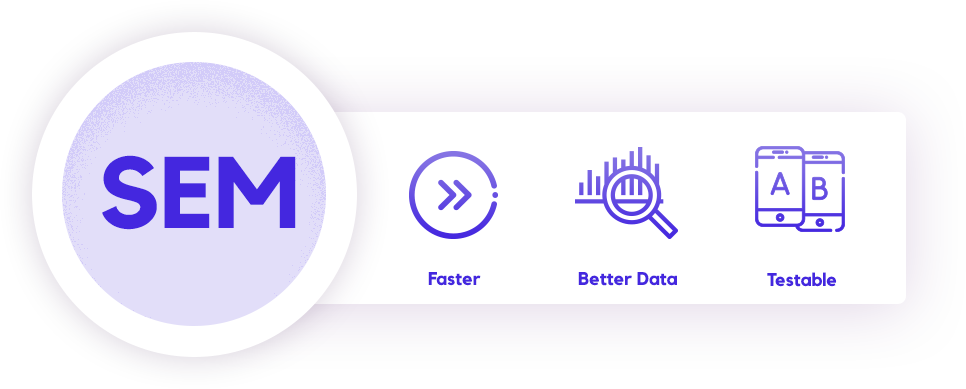
1. Quick Results
Within five minutes, you can start advertising on Google and start showing up right at the top of the results. All you need is money, an ad, and a landing page.
If we want to do a test and need results tomorrow, SEM using PPC (Pay-Per-Click) is the way to go. When you build a PPC campaign, you get actionable results within 24 hours. Paid traffic will quickly give you the best idea of which keywords are the most valuable to your advertising campaigns.
2. Better Data
With SEM, you have better data because you can do A/B testing of PPC ad copy. You control the keywords and content of the ad and landing page. You can control where you send your traffic and what the ad is.
You’ll quickly learn which types of ads, ad copy, and keywords get the highest click-through rate. You can use this data to improve the keywords and SEO of your website’s content.
3. Testable Experiences
Since you know what people are searching for, SEM allows you to A/B test every element, such as changing keywords, headlines, angles, and every variable imaginable for your campaign. The results can dramatically improve ranking and conversions. You have the freedom to experiment if you have the budget. With SEM, every click costs money, whether it converts or not.
Why is SEM Important?
- It Shows First – Top of the page is the most valuable web real estate. You receive the lion’s share of clicks.
- You Control Where the Ad Appears – You can choose your brand name, target specific keywords, or target your competitor’s keywords.
- Remarketing – If someone has clicked on your keyword or site before, you can also target them with a specific ad if they search again.
The significant factor with SEM is control, the ability to test keywords, and strategy.
You don’t have the same control or short-term testing data with SEO. But it’s still essential.
Why Is SEO So Important?
There are four primary reasons why your site needs proper SEO.
- SEO is Free – You don’t pay every time someone clicks a link to your website.
- SEO Adds Credibility – People rely on Google to give them the best, most relevant search results.
- SEO is Intent-Based – Because people ask questions relevant to what you offer, they are pre-qualified for what you are selling.
- SEO Tailors to Each User – Searches use keywords and questions that match your website. They stop and browse to find answers and solutions specifically for them.
SEO naturally attracts potential customers searching for what you offer without spending money to get them to your website.
The purpose of both SEM and SEO is to drive traffic and form the overall marketing strategy. To help you crunch all that data and monitor your success, you need some tools.
What Tools Can I Use to Rank on Google?
Clients tell us, “I want to rank on Google, but I don’t know how to get started.” This is our four-step process and the four tools we use to perform a site analysis. We can see where the website is and what needs improvement.

1. Mobile-Friendly Test by Google
Google developed the Mobile-Friendly Test tool to test websites and pages to see how well they perform on mobile devices. This is a big deal since over 63 percent of paid Google search clicks in the United States originate from mobile, and they account for nearly 56 percent of total clicks.
Google believes that mobile is the future and indexes them first. If your site doesn’t load fast on mobile, Google will penalize you by putting your pages in search “Siberia.”
The tool looks at how fast the site loads, whether it looks good on mobile, and if it works well with every browser. It’s easy to use, just click the link and enter the site’s URL. You’ll quickly receive a report with specific items that aren’t working correctly. Fixing them will help you improve the site and your rankings.
2. GTMetrics Speed Test
Remember, a page load time of 1 second or more is slow. Why? People have no patience. A three-second load time increases the bounce rate probability by 32%, and 5-seconds will increase to 90%! Long pages and lots of graphics will slow down the page load.
I recommend all my clients to test their site with GTMetrics. It’s free, and it’s accurate. It gives your pages a grade from A to E, plus a list of actionable items for you or your developer to improve the site’s loading speed.

3. Yoast Plugin
I think everyone and their grandma should have Yoast. It’s a free plugin that you can install on your WordPress site, and it reads the text that you write, and it tells you exactly what you should do for a specific keyword.
Some examples it tells you to fix are:
- The sentences are too long
- The sentences are too short
- Not enough titles (H1. H2, H3)
- Not enough images
- Missing Alt Text
Yoast helps you optimize the page, usually with easy fixes. I use it to ensure my websites follow the best practices.
4. Browserstack
BrowserStack is our secret weapon. It’s a service that allows you to test many websites on various devices and browsers to see how they look before publishing them. For example, we put our test page on a mobile phone and discovered that the CTA was below the fold. It allows you to fix these critical details before sending them out into the world.
It’s a great tool that allows you to see tiny errors that you wouldn’t see working only on a computer screen. It works for all phones, tablets, and computers running Windows or Apple.
Whether you purchased a website builder, a new theme, or coding from scratch, it’s a lifesaver for finding issues and optimizing your pages’ look.
SEO Ranking Factors

Here is a list of the 5 to 7 main factors that make SEO a successful traffic building strategy:
1. Using Keywords in H1, H2, and H3 headlines
Google sends out robot web crawlers to learn about or “index” your site. They read the keywords in the titles (H1), sub-headlines (H2 & H3), and general content. You need to use relevant keywords throughout each page, starting with the title, so Google bots know each page’s relevance.
H1 is the most important.
2. Loading Speed (example AMP)
Remember, if the page takes longer than one second to load, people will start leaving and not see what you have to offer. Optimize pages to load faster.
3. Index Mobile First
Today, cell phones are critical to browsing. Consequently, Google places a higher priority on how your pages load and display on cell phones than on desktops.
4. Engagement vs. Lack Thereof
The longer people stay on the site or page, the more relevant that search result was to them. Short stays, a.k.a. bounce rates, mean Google will be less likely to show that page for a given search term in the future.
5. Video Content (Especially YouTube)
Google loves video. People spend more time watching a video, which means better engagement. 85% of all internet users in the U.S. watch online video content each month. One statistic tells us that blogs with videos see a 157% increase in search traffic over text-only blog posts.
6. Site Authority
Authority ranking is important, but it takes specialized techniques that we won’t get into in this article.
7. Backlinks
Backlinks are also another factor in increasing SEO rankings. However, it too is a specialized technique out of the scope of this article.
If you just concentrate on the first five factors on this list, your website is bound to see a definite boost in rankings.
SEM Ranking Factors
SEM relies on paid ads to gain position. The type of pricing will help determine ranking position.
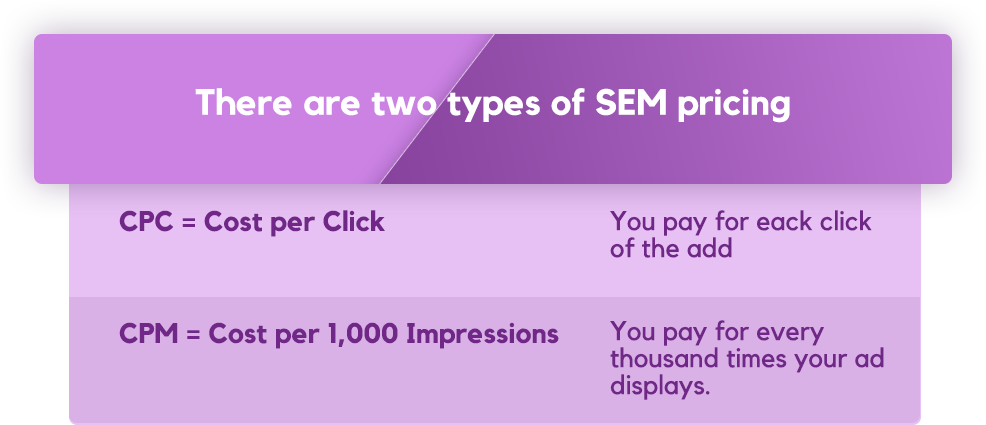
The most significant factor to SEM is the size of your budget. The daily budget + the keyword bid price = your result. For example, let’s say a keyword costs $5, and you have a daily budget of $100. You can get 20 clicks per day or 20,000 impressions. If you bid higher than your competition, your ad will be higher on the page.
Some other factors include:
- Ad Relevance
- Quality Score
- The quality of the landing page
- The loading speed
One factor that’s critical for SEM is the Quality Score.
Quality Score vs. Cost
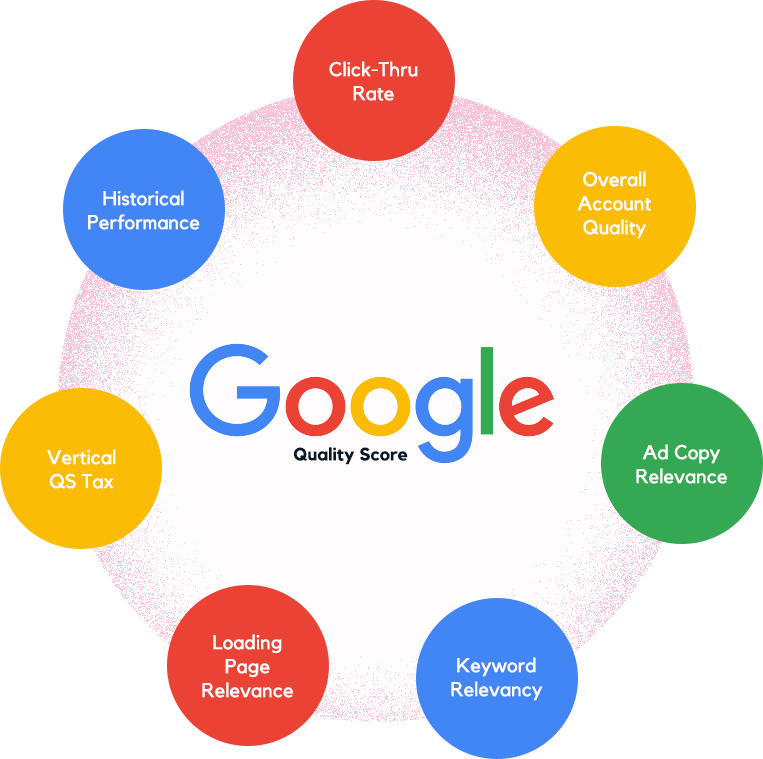
When you do Search Engine Marketing, Google analyzes your ads using a quality score. They use seven factors to create a quality score for the ad.
- Vertical QS Tax
- Historical Performance
- Click-Through Rate
- Overall Account Quality
- Ad Copy Relevance
- Keyword Relevancy
- Landing Page Relevance
The Quality Score ranges from 1 to 10, and it affects what Google charges you for a given keyword. At a QS of 5, Google charges an average rate. For a score of 1, they increase the cost by 400%, and for a score of 10, they discount the rate by 50%.
Google giveth and Google taketh away depending on the quality of your ads.

What Can A Marketer Do to Improve SEO/SEM?
The low-hanging fruit and the easiest thing to fix is page loading speed. Focus on making your pages load faster to see better results.
After that, ensure that your pages are mobile-friendly. Mobile-first is the name of the game to get Google on your side. Be sure your pages work on all devices and browsers using the tools we mentioned above.
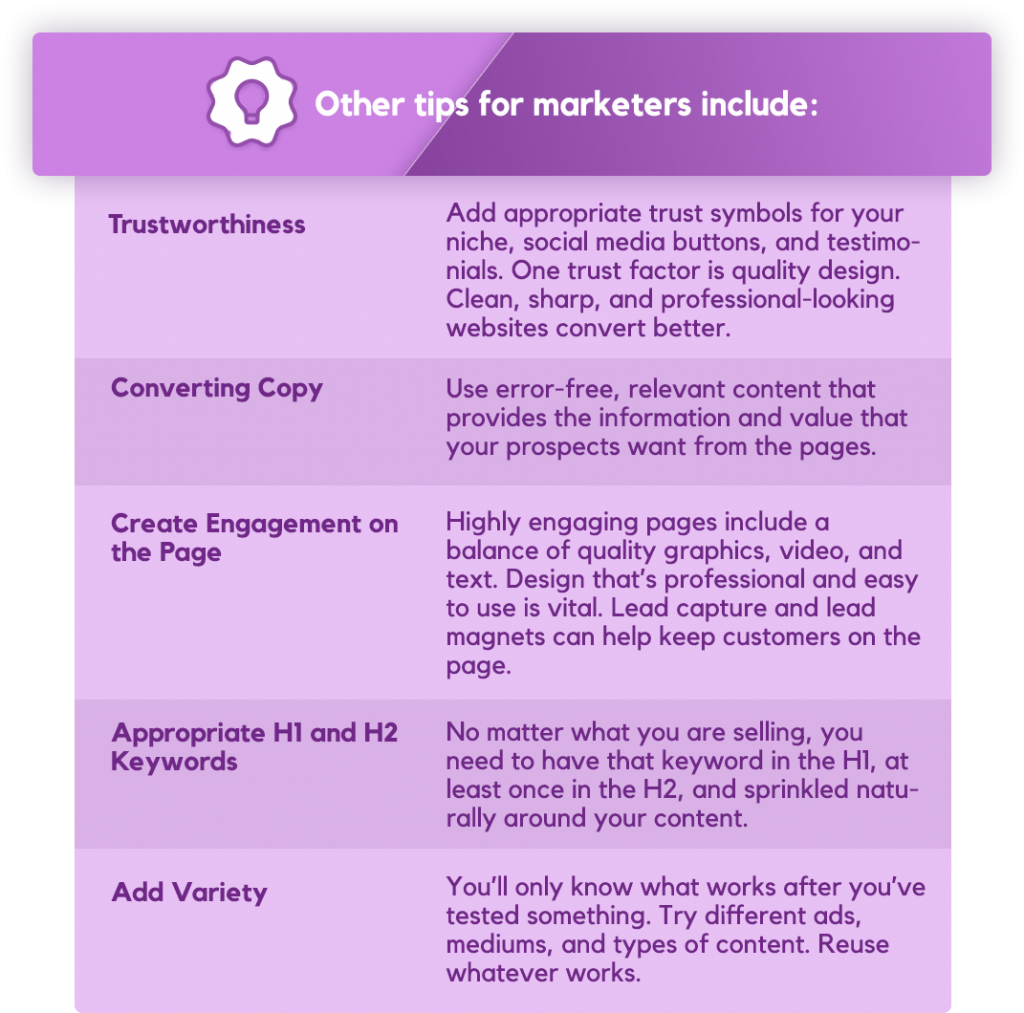
To summarize, SEO is free and drives organic traffic. Using SEM will provide instant results, not always positive. Costs can quickly add up. However, when appropriately used, SEM will produce a positive ROI and generate large returns rapidly.
Always solicit a professional SEO or SEM marketer’s advice and assistance before starting a new marketing campaign, especially paid campaigns. They will support you in returning the best ROI or ROAS.

